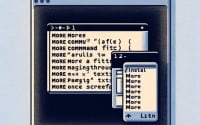dpkg Linux Command Guide | Managing Debian Packages

Are you finding it challenging to manage packages in Debian-based Linux distributions? You’re not alone. Many developers grapple with this task, but there’s a tool that can make this process a breeze. Like a skilled librarian, the ‘dpkg’ command helps manage your Linux library of packages. These packages can run on any system, even those without Linux installed.
This guide will walk you through the basics to more advanced uses of the dpkg command. We’ll explore dpkg’s core functionality, delve into its advanced features, and even discuss common issues and their solutions.
So, let’s dive in and start mastering dpkg!
TL;DR: How Do I Use the dpkg Command in Linux?
The dpkg command is a powerful tool used to install, remove, and provide information about .deb packages in Debian-based Linux distributions. Here’s a simple example of its usage:
sudo dpkg -i package.deb
# Output:
# Selecting previously unselected package.
# (Reading database ...
# Preparing to unpack package.deb ...
# Unpacking package (1.0-1) ...
# Setting up package (1.0-1) ...
In this example, we use the dpkg -i command to install a .deb package named ‘package.deb’. The output shows the process of unpacking and setting up the package.
This is just a basic way to use the dpkg command in Linux, but there’s much more to learn about managing packages efficiently. Continue reading for more detailed information and advanced usage scenarios.
Table of Contents
Basic Use of dpkg Command
The dpkg command is a versatile tool in the Linux environment, especially when it comes to managing .deb packages. Let’s break down its basic uses into three major categories: installing, removing, and inspecting packages.
Installing Packages with dpkg
The most common use of dpkg is to install .deb packages. Here’s an example of how you can install a package:
sudo dpkg -i sample.deb
# Output:
# Selecting previously unselected package.
# (Reading database ...
# Preparing to unpack sample.deb ...
# Unpacking package (1.0-1) ...
# Setting up package (1.0-1) ...
In this example, the -i flag is used to install the ‘sample.deb’ package. The output indicates the process of unpacking and setting up the package.
Removing Packages with dpkg
To remove a package, you can use the -r or --remove option. Here’s how you can remove a package:
sudo dpkg -r sample
# Output:
# (Reading database ...
# Removing sample ...
# Processing triggers for man-db (2.8.3-2ubuntu0.1) ...
In this example, the -r flag is used to remove the ‘sample’ package. The output shows the process of removing the package and processing triggers.
Inspecting Packages with dpkg
You can use dpkg to inspect .deb packages as well. The -I or --info option can be used to display information about a package. Here’s an example:
dpkg -I sample.deb
# Output:
# new debian package, version 2.0.
# size 1234 bytes: control archive=123 bytes.
# 123 bytes, 5 lines control
# Package: sample
# Version: 1.0-1
In this case, the -I flag is used to display information about the ‘sample.deb’ package. The output shows the package’s name, version, and other details.
While dpkg is a powerful tool, it’s important to remember that it doesn’t resolve dependencies. This means that if your package depends on another package that isn’t installed, you’ll need to install that package separately. Despite this, dpkg is a fundamental tool for any Linux user and understanding its basic use is essential for managing .deb packages effectively.
Harnessing the Power of dpkg: Advanced Usage
As you become more comfortable with the basic dpkg command, you’ll find that its true power lies in its advanced features. dpkg’s flexibility allows it to handle more complex package management tasks, such as dealing with different flags or options. Let’s explore some of these advanced uses.
Before we dive into the advanced usage of dpkg, let’s familiarize ourselves with some of the command-line arguments or flags that can modify the behavior of the dpkg command. Here’s a table with some of the most commonly used dpkg arguments.
| Argument | Description | Example |
|---|---|---|
-i | Installs a package. | sudo dpkg -i sample.deb |
-r | Removes a package. | sudo dpkg -r sample |
-I | Shows information about a package. | dpkg -I sample.deb |
-l | Lists all installed packages. | dpkg -l |
-s | Shows the status of a package. | dpkg -s sample |
-L | Lists files provided by a package. | dpkg -L sample |
-S | Searches for a package providing a file. | dpkg -S /path/to/file |
-p | Prints detailed information about a package. | dpkg -p sample |
-C | Checks for half-installed packages. | dpkg -C |
-P | Purges a package (removes everything, including configuration files). | sudo dpkg -P sample |
Now that we have a basic understanding of dpkg command line arguments, let’s dive deeper into the advanced use of dpkg.
Installing Multiple Packages with dpkg
While the -i flag is used to install a single package, dpkg can also install multiple packages at once. Here’s an example:
sudo dpkg -i sample1.deb sample2.deb
# Output:
# Selecting previously unselected package sample1.
# (Reading database ...
# Preparing to unpack sample1.deb ...
# Unpacking sample1 (1.0-1) ...
# Selecting previously unselected package sample2.
# Preparing to unpack sample2.deb ...
# Unpacking sample2 (1.0-1) ...
# Setting up sample1 (1.0-1) ...
# Setting up sample2 (1.0-1) ...
In this example, we use the dpkg -i command to install two packages: ‘sample1.deb’ and ‘sample2.deb’. The output shows the process of unpacking and setting up both packages.
Checking the Status of a Package with dpkg
The -s flag is used to check the status of a specific package. Here’s how you can check a package’s status:
dpkg -s sample
# Output:
# Package: sample
# Status: install ok installed
# Priority: optional
# Section: utils
# Installed-Size: 1234
# Maintainer: Ubuntu MOTU Developers <[email protected]>
# Architecture: amd64
# Version: 1.0-1
# Description: Sample package for dpkg tutorial
# Original-Maintainer: Debian Sample <[email protected]>
In this case, the -s flag is used to display the status of the ‘sample’ package. The output shows the package’s status, priority, section, installed size, maintainer, architecture, version, description, and original maintainer.
Purging a Package with dpkg
The -P flag is used to purge a package, which removes the package along with its configuration files. Here’s how you can purge a package:
sudo dpkg -P sample
# Output:
# (Reading database ...
# Purging configuration files for sample ...
# Processing triggers for man-db (2.8.3-2ubuntu0.1) ...
In this example, the -P flag is used to purge the ‘sample’ package. The output shows the process of purging the package’s configuration files and processing triggers.
These are just a few examples of the advanced uses of the dpkg command. As you can see, dpkg is a powerful tool for managing .deb packages in Debian-based Linux distributions. With a bit of practice, you’ll be able to handle even the most complex package management tasks with ease.
Exploring Alternative Package Management Methods
While dpkg is a potent tool for managing .deb packages, it’s not the only one available in the Linux ecosystem. There are alternative approaches for managing packages, such as using the apt command or third-party tools. Let’s explore these alternatives and their effectiveness.
Using the APT Command
The Advanced Package Tool (APT) is a command-line utility that handles package management in Debian-based systems. Unlike dpkg, APT can handle dependencies, making it a more user-friendly tool for package management. Here’s an example of how you can use the apt command:
sudo apt install sample
# Output:
# Reading package lists... Done
# Building dependency tree
# Reading state information... Done
# The following NEW packages will be installed:
# sample
# 0 upgraded, 1 newly installed, 0 to remove and 0 not upgraded.
# Need to get 0 B/123 kB of archives.
# After this operation, 456 kB of additional disk space will be used.
# Selecting previously unselected package sample.
# (Reading database ...
# Preparing to unpack .../sample_1.0-1_amd64.deb ...
# Unpacking sample (1.0-1) ...
# Setting up sample (1.0-1) ...
In this example, the apt install command is used to install a package named ‘sample’. The output shows the process of reading package lists, building the dependency tree, reading state information, and installing the package. Unlike dpkg, apt handles dependencies, so you don’t need to worry about missing dependencies.
Using Third-Party Tools
There are also third-party tools available for managing packages in Linux. One popular tool is Synaptic, a graphical package management program for apt. It provides the same features as apt but in a more user-friendly interface. Here’s an example of how you can use Synaptic to install a package:
sudo synaptic
After running this command, you can search for the package you want to install, mark it for installation, and click the ‘Apply’ button. Synaptic will then take care of downloading and installing the package, along with any dependencies.
While dpkg, apt, and Synaptic all have their advantages and disadvantages, they all serve the same purpose: to make package management in Linux easier. Whether you prefer the simplicity of dpkg, the dependency handling of apt, or the user-friendly interface of Synaptic, there’s a tool out there for you. The key is to choose the tool that best fits your needs and comfort level.
Troubleshooting dpkg: Common Issues and Solutions
While dpkg is a powerful tool, like any software, it can occasionally throw up errors or issues. Here, we’ll discuss some of the common problems you might encounter while using the dpkg command and provide solutions to get you back on track.
‘dpkg: error processing package’
One of the most common errors you might encounter is the ‘dpkg: error processing package’ error. This error usually occurs when dpkg encounters a problem while installing, removing, or upgrading a package. Here’s an example of this error:
sudo dpkg -i faulty.deb
# Output:
# (Reading database ...
# Preparing to unpack faulty.deb ...
# Unpacking faulty (1.0-1) ...
# dpkg: error processing package faulty (--install):
# subprocess installed post-installation script returned error exit status 1
# Errors were encountered while processing:
# faulty
In this example, we’re trying to install a package named ‘faulty.deb’. The ‘dpkg: error processing package’ error occurs because there’s a problem with the post-installation script of the package.
To resolve this issue, you can try to fix the package itself, if possible. If that’s not an option, you can use the -f or --configure option with dpkg to try and fix the problem:
sudo dpkg --configure -a
# Output:
# Setting up faulty (1.0-1) ...
In this case, the --configure -a command is used to configure all packages that are unpacked but not yet configured. The output shows the process of setting up the ‘faulty’ package.
‘dpkg: dependency problems prevent configuration of package’
Another common issue is the ‘dpkg: dependency problems prevent configuration of package’ error. This error occurs when a package depends on another package that isn’t installed. Here’s an example of this error:
sudo dpkg -i dependent.deb
# Output:
# Selecting previously unselected package dependent.
# (Reading database ...
# Preparing to unpack dependent.deb ...
# Unpacking dependent (1.0-1) ...
# dpkg: dependency problems prevent configuration of dependent:
# dependent depends on libsample; however:
# Package libsample is not installed.
# dpkg: error processing package dependent (--install):
# dependency problems - leaving unconfigured
# Errors were encountered while processing:
# dependent
In this example, we’re trying to install a package named ‘dependent.deb’. The ‘dpkg: dependency problems prevent configuration of package’ error occurs because the ‘dependent’ package depends on the ‘libsample’ package, which isn’t installed.
To resolve this issue, you can install the missing dependencies with the apt command:
sudo apt install -f
# Output:
# Reading package lists... Done
# Building dependency tree
# Reading state information... Done
# Correcting dependencies... Done
# The following additional packages will be installed:
# libsample
# The following NEW packages will be installed:
# libsample
# 0 upgraded, 1 newly installed, 0 to remove and 0 not upgraded.
# Need to get 0 B/123 kB of archives.
# After this operation, 456 kB of additional disk space will be used.
# Do you want to continue? [Y/n] Y
# Get:1 http://archive.ubuntu.com/ubuntu bionic/universe amd64 libsample amd64 1.0-1 [123 kB]
# Fetched 123 kB in 1s (123 kB/s)
# Selecting previously unselected package libsample.
# (Reading database ...
# Preparing to unpack .../libsample_1.0-1_amd64.deb ...
# Unpacking libsample (1.0-1) ...
# Setting up libsample (1.0-1) ...
# Processing triggers for libc-bin (2.27-3ubuntu1) ...
In this case, the apt install -f command is used to correct broken dependencies. The output shows the process of reading package lists, building the dependency tree, reading state information, correcting dependencies, and installing the missing ‘libsample’ package.
These are just a couple of examples of the issues you may encounter while using the dpkg command. However, with a bit of troubleshooting and the right commands, you can resolve these issues and continue managing your .deb packages efficiently.
Unpacking Linux Package Management
Before we delve deeper into the dpkg command, it’s crucial to understand the broader picture of package management in Linux and the role dpkg plays in it.
Understanding Package Management in Linux
Package management is a method of installing and maintaining software on your system. It involves handling software in a way that allows you to add, remove, or update individual pieces of software (packages) while ensuring that all dependencies are satisfied.
In Linux, package management is a crucial part of system maintenance. It provides a way to distribute, update, and remove software in a consistent manner. It’s the backbone of a secure and up-to-date Linux system.
The Role of dpkg in Package Management
In the world of Debian-based Linux distributions, dpkg is the engine behind package management. It’s a low-level tool that handles the installation, removal, and management of .deb packages.
While dpkg itself cannot handle dependencies, it lays the groundwork for higher-level tools like apt, which can handle dependencies. This makes dpkg a fundamental part of the package management ecosystem in Debian-based systems.
Demystifying .deb Packages
.deb is a binary package format—the kind of file that dpkg manages. It’s a compressed file that includes the software to be installed and information about the software, such as its dependencies, version, maintainer, and more.
Let’s take a closer look at the structure of a .deb package using the dpkg command:
dpkg -I sample.deb
# Output:
# new debian package, version 2.0.
# size 1234 bytes: control archive=123 bytes.
# 123 bytes, 5 lines control
# Package: sample
# Version: 1.0-1
# Architecture: all
# Maintainer: John Doe <[email protected]>
# Description: Sample package for dpkg tutorial
In this example, the -I flag is used to display information about the ‘sample.deb’ package. The output shows the package’s name, version, architecture, maintainer, and description. This information is stored in the control file, one of the key components of a .deb package.
A .deb package consists of three parts:
- debian-binary: This file contains a single line indicating the package version.
- control archive: This is a compressed file that contains metadata about the package, such as its name, version, architecture, maintainer, and description. It also includes pre- and post-installation scripts.
- data archive: This is another compressed file that contains the actual program files.
Understanding .deb packages and their structure is essential for effectively using the dpkg command. With this knowledge in hand, you’re well-equipped to manage .deb packages on your Debian-based Linux system.
Diving Deeper: The Relevance of Package Management
Package management is not just about installing or removing software. It’s a critical aspect of maintaining a Linux system. Efficient package management ensures that your system is secure, up-to-date, and running smoothly.
Exploring Related Concepts
While dpkg is a fundamental tool for managing .deb packages, there’s a lot more to package management. For instance, managing repositories is another crucial aspect of package management. Repositories are storage locations where packages are retrieved and installed from. They ensure that you have access to the latest software updates.
Building .deb packages is another related concept worth exploring. By building your own .deb packages, you can distribute your software to other Debian-based systems. Here’s a basic example of how you can build a .deb package:
dpkg-deb --build sample
# Output:
# dpkg-deb: building package 'sample' in 'sample.deb'.
In this example, the dpkg-deb --build command is used to build a .deb package named ‘sample.deb’ from a directory named ‘sample’. The output shows the process of building the package.
Further Resources for Mastering dpkg
To continue your journey in mastering dpkg and package management, here are some resources that can help:
- dpkg Command Guide: This tutorial provides a comprehensive guide on using the dpkg command in Linux, including various examples and explanations.
dpkg Command Tutorial: This tutorial by DigitalOcean provides a detailed breakdown of its options and usage.
How to use dpkg in Linux: This article provides a variety of dpkg command examples, from installing and removing packages to upgrading and downgrading them.
Mastering dpkg and understanding the broader picture of package management will equip you with the skills needed to maintain a secure and efficient Linux system. So, dive in and start exploring!
Wrapping Up: Package Management with dpkg
In this comprehensive guide, we’ve delved into the world of dpkg, a fundamental tool for managing .deb packages in Debian-based Linux distributions.
We began with the basics, learning how to use dpkg to install, remove, and inspect .deb packages. We then explored more advanced usage, discussing different flags or options with the dpkg command, and how to handle different scenarios. Along the way, we’ve tackled common issues you might encounter when using dpkg, such as ‘dpkg: error processing package’ and ‘dpkg: dependency problems prevent configuration of package’, providing you with solutions for each issue.
We also looked at alternative approaches to package management, comparing dpkg with other methods like using the apt command or third-party tools like Synaptic. Here’s a quick comparison of these methods:
| Method | Dependency Handling | Interface | Ease of Use |
|---|---|---|---|
| dpkg | No | Command Line | Moderate |
| apt | Yes | Command Line | High |
| Synaptic | Yes | Graphical | High |
Whether you’re just starting out with dpkg or you’re looking to level up your package management skills, we hope this guide has given you a deeper understanding of dpkg and its capabilities.
With its simplicity and power, dpkg is a critical tool for package management in Debian-based systems. Now, you’re well equipped to manage .deb packages efficiently. Happy coding!


